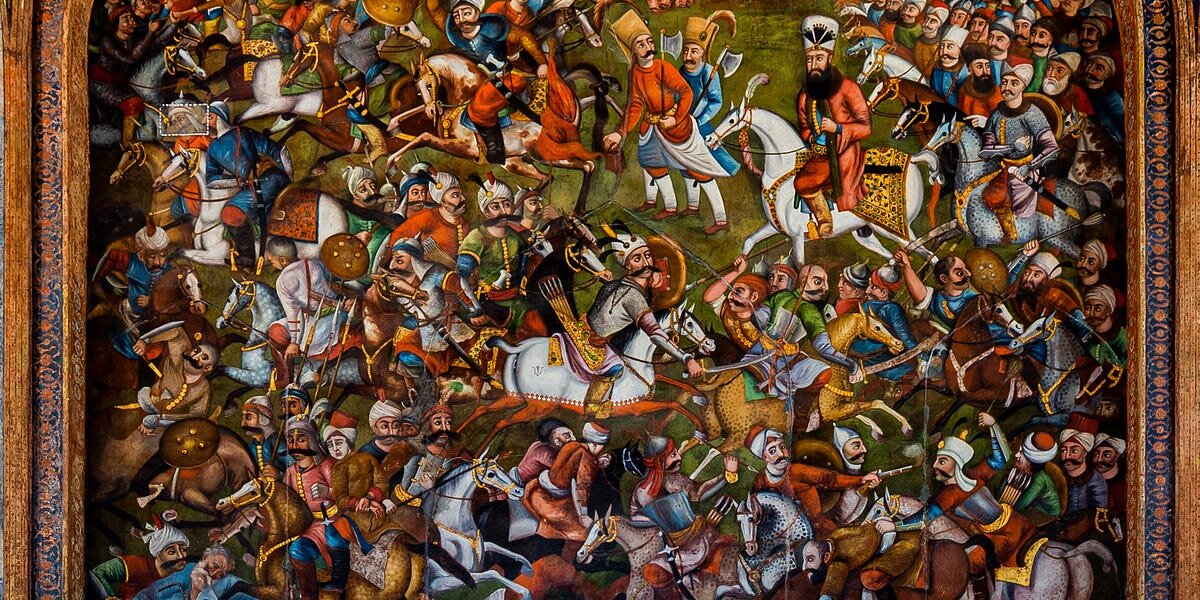The Battle of Chaldoran: a lost war that consolidated Iranian identity

Elegies are a huge part of Iranian mourning rituals. They don't just let mourners show their sorrow and sadness; they also keep the memories of the person alive by telling stories of their life. Anyone remembered in a ceremony with an elegy is seen as important. In public ceremonies, they are important historical, national, or religious figures, and in private ones, they are beloved family members.
Hundreds of people who participated in a mourning event in the northwestern Iranian city of Ardabil on Sunday upheld this old Iranian tradition. A reciter stood in front of the huge crowd in a roofed room, which shielded them from the mountainous city’s freezing temperatures. The figures they remembered through their elegies were the martyrs who fell during the Battle of Chaldoran (Chaldiran) over five centuries ago.
“The Battle of Chaldoran isn't just another skirmish in Iran's long and storied history," one participant told me in a subsequent conversation, his slightly greyed hair suggesting he must be in his forties. “The Martyrs of the Chaldoran are seen as Iranians who were willing to give up their lives to safeguard their identity and values. It happened over 500 years ago, but the cause they fought for is still relevant today, especially since our region is still being invaded by outsiders.”
What happened during the Battle of Chaldoran?
The year is 1514; the location, the dusty plains of Chaldoran. Iranian soldiers led by the Safavid Shah Esmail I stood before the forces of the Ottoman Caliphate. The Iranians had powerful reasons to fight, but their opponents were far better armed, with higher technology weapons that were developed through the Ottomans' encounters with, and adaptations of, technologies from the Byzantine Empire.
“Iranians ended up losing the war,” noted Hossein Salar Seyfodini, a researcher and expert on the South Caucasus politics and history. “Iran lost the city of Tabriz and swathes of its northern territories. But what it gained through the Chaldoran war helped it return them.”
Iranians understood that their identity was once again under threat after a long period of Arab rule and that they needed to become more resilient to protect it, the expert added. “What arose from the ashes of defeat was a fierce sense of national unity.”
The Safavids are largely known to be the first politically independent dynasty since the Arab conquest of Iran which began in 633 AD and was largely completed by 651 AD. The founder of the Dynasty, Shah Esmail I made Twelver Shia Islam the official religion of Iran, a move that defied centuries of Sunni role, carved out an Iranian identity, and separated it from the tapestry of its neighbors.
But the Ottomans, with their eyes set on territorial expansion and the claim to Islamic caliphate, saw this as an intolerable challenge.
“While on the surface it looks like Iran just lost some territory, it wasn’t the case for those that inhabited the country back then. The Ottomans wanted to rule over the Islamic world like the Umayyads and Abbasids. That’s why the struggle of Iran wasn't just against an external power, but a fight to preserve the core of what made them Iranian,” Seyfodini stated.
This collective consciousness would ultimately empower a resurgence under Shah Abbas I, who would build upon the lessons of Chaldoran to reclaim lost territories and establish a powerful, unified Iran, he added.
At the Ardabil event on Sunday, I encountered a man with his young child outside after the ceremony had concluded. Shortly after, the mother arrived. She spoke to her son in Azeri, asking about his day. In response, the toddler began chanting an elegy he had heard, gently striking his chest – another common Iranian practice during mourning. “This is the second time such ceremony has been held to commemorate the martyrs of Chaldoran,” said the father. “I’ll make sure to take Hossein with me every year,” he stated, referring to his son’s name.
Leave a Comment